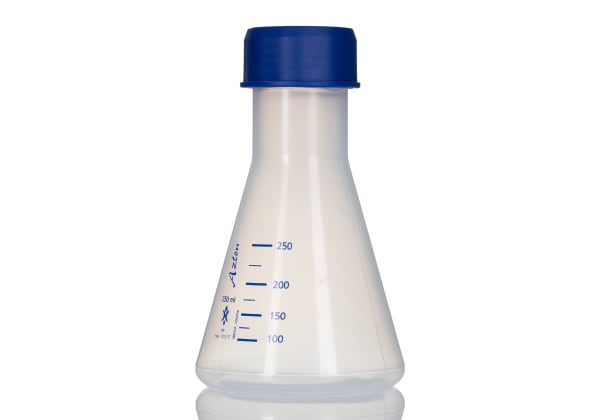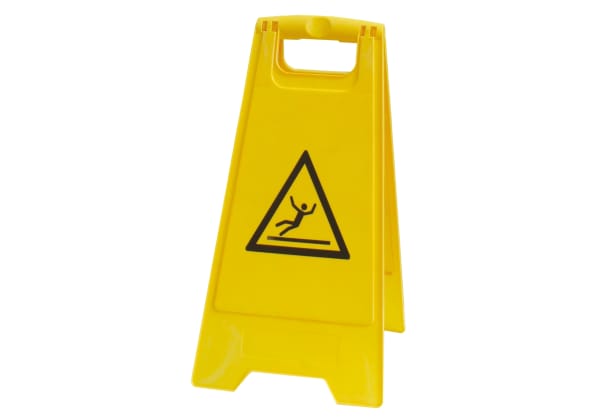- Published 20 Feb 2024
- Last Modified 20 Feb 2024
- 7 min
A Guide to Health and Safety in a Laboratory
Explore the intricacies of maintaining a safe laboratory environment, understanding the importance of health and safety procedures, identifying potential hazards, and implementing effective safety measures.

Reviewed by David Carmichael, Solution Engineer (February 2024)
Laboratories are spaces where hypotheses are tested, discoveries are made, and breakthroughs happen. However, in these controlled environments, health and safety is crucial.
Maintaining a secure working environment is not just a regulatory requirement; it is fundamental to responsible scientific practice. This guide delves into the principles of laboratory safety, from common hazards and essential safety equipment to why a well-designed laboratory is crucial.
Why is Safety in the Laboratory So Important?
Health and safety in a laboratory setting is paramount to ensuring the well-being of personnel and the integrity of scientific processes. Laboratories are environments teeming with various hazardous substances, equipment, and processes, necessitating stringent safety measures.
Ignoring safety measures in the laboratory can have significant consequences. Accidents can occur leading to injury or illness, and incidents can also disrupt research and potentially damage equipment or facilities.
There are several reasons why laboratory safety is of paramount importance:
- Safeguarding laboratory personnel's health and well-being. By adhering to safety protocols and using suitable PPE, individuals can minimise risks associated with hazardous substances and equipment
- Preserving research and experimental integrity. Accidental exposure or contamination can compromise data accuracy and reliability, leading to inaccurate conclusions or squandered resources
- Fostering a culture of responsibility and accountability in the laboratory. Adherence to safety measures ingrains a mindset where safety is prioritised, and everyone is held accountable for their actions to ensure a safe working environment for all
Laboratory Hazards You Need to Be Aware of
Understanding the various hazards present while working in a laboratory is crucial. This understanding enables you to take the necessary safety precautions inside the laboratory to ensure your safety and that of those around you.
Here are some of the different types of hazards you may encounter in a laboratory setting:
Chemical Hazards in Laboratory
Chemicals are commonly used in laboratories for various experiments and analyses. These substances can be hazardous if not handled properly. Exposure to toxic or corrosive chemicals, fume inhalation, or accidental spills can pose serious risks.
It is essential to follow proper handling procedures and ensure measures are implemented for the correct storage and disposal of chemicals. You should also use appropriate PPE such as gloves, safety glasses, and lab coats.
The properties of chemicals used in the laboratory must be understood by all personnel. It is also recommended to consult Material Safety Data Sheets (MSDS) for comprehensive information on chemical substances.
Electrical Hazards in Laboratory
Laboratories are filled with electrical equipment and devices. Faulty wiring, damaged cords, or improper use of electrical equipment can lead to shocks or fires.
Always ensure that your equipment is in proper working condition. You should regularly inspect electrical equipment for signs of damage or wear, and address any issues promptly to prevent incidents. It is also recommended to avoid overloading electrical outlets and never use damaged or frayed cords. Ensure all electrical installations comply with safety standards and regulations for safe wiring practices.
Biological Hazards in Laboratory
Laboratories that handle biological materials, such as bacteria, viruses, or fungi, pose a risk of exposure to infectious diseases. Thorough risk assessments should be conducted before working with biological materials and containment measures implemented based on the level of risk.
Follow proper protocols for handling and disposing of biological materials, wear appropriate PPE or protective gear, and maintain a clean and sanitised work area to minimise contamination risk. This includes emphasising the importance of proper personal hygiene practices such as handwashing when working with biological agents.
Ergonomic Hazards in the Laboratory
Spending long hours in the laboratory can lead to ergonomic hazards, such as poor posture, repetitive motions, or lifting heavy objects. It is important to maintain proper ergonomics by using adjustable furniture, taking regular breaks during prolonged periods of work, and practising correct posture and lifting techniques.
In terms of workstation design, set up workstations to promote ergonomic principles. This will help to reduce the risk of injury and keep personnel healthy at work.
Hazards of Laboratory Waste
Improper disposal of laboratory waste can have detrimental effects on the environment and human health. Different types of waste, such as chemical waste, biological waste, or sharps, require specific disposal methods. Always follow the proper waste management procedures and use designated, clearly labelled waste disposal containers to separate different types of waste.
Why Good Laboratory Design is Important for Efficiency, Effectiveness and Safety
A well-designed laboratory plays a pivotal role in promoting efficiency, effectiveness, and safety at work. By adhering to laboratory safety rules, utilising key safety signs, displaying informative posters, and equipping the space with essential safety equipment, potential hazards in a laboratory can be minimised. This allows a safe working environment to be maintained.
Laboratory Safety Rules
Following laboratory safety rules protects personnel, equipment, and the environment from potential risks. These rules typically include guidelines for handling hazardous materials, proper storage and disposal of chemicals, wearing appropriate PPE, and maintaining a clean and organised workspace.
Additionally, a comprehensive set of Standard Operating Procedures (SOPs) should be developed and enforced for all laboratory activities. These should take the form of clear, written instructions that adhere to regulatory requirements. It is also necessary to ensure personnel are trained on the correct implementation of SOPs.
Lastly, as in any workplace, clear emergency procedures must be established. It is advised to conduct regular drills to ensure personnel are familiar with emergency protocols and evacuation routes in case of emergency.
Key Laboratory Safety Signs
Laboratory safety signs are essential visual aids that communicate relevant safety information. These signs can include warnings about hazardous substances, reminders to wear protective gear, instructions for emergency procedures, and guidelines for proper waste disposal.
Clear communication is key; it is essential to ensure signs are both visible and easily understood by all personnel. By prominently displaying these signs throughout the laboratory, employees and visitors can be constantly reminded of potential risks and the necessary precautions to take.
Laboratory Safety Posters
Laboratory safety posters are another effective way to enhance safety awareness. These posters typically contain informative graphics and concise messages about specific safety procedures. For example, handling corrosive substances, using fire extinguishers, or practising proper ergonomics. Placing these posters in visible locations can reinforce key safety laboratory procedures and remind personnel of safe practices.
Laboratory Safety Equipment
In addition to safety signage and posters, laboratories should be equipped with the necessary safety equipment. This can include items such as fire extinguishers, emergency eye wash stations, chemical spill kits, fume hoods, and safety cabinets.
By providing these essential safety tools, personnel can respond effectively to emergencies and minimise incidents' potential impact.
Tips for safety and emergency equipment include:
- Appropriate PPE for different laboratory activities should be provided and enforced
- Safety equipment should be regularly inspected and replaced if damaged or outdated
- Well-equipped first aid kits, emergency showers, and eye wash stations should be maintained
- All personnel should be trained in the correct emergency equipment use
Summary
Prioritising health and safety in a laboratory is essential. From understanding potential hazards to implementing robust safety measures and maintaining a secure environment, meticulous attention to laboratory health and safety procedures ensures not only the well-being of individuals but also the reliability and validity of scientific outcomes.
A well-designed laboratory is also vital for promoting efficiency, effectiveness, and safety. By implementing and adhering to laboratory safety rules, utilising key safety signs, displaying informative posters, and equipping the laboratory with essential safety equipment, a safe working environment can be created.
At RS, we recognise the importance of laboratory safety. We offer a broad range of safety products and equipment, including personal protective equipment, safety signage, and safety cabinets. Our products adhere to the highest safety standards to help you create a safe and secure laboratory environment.


